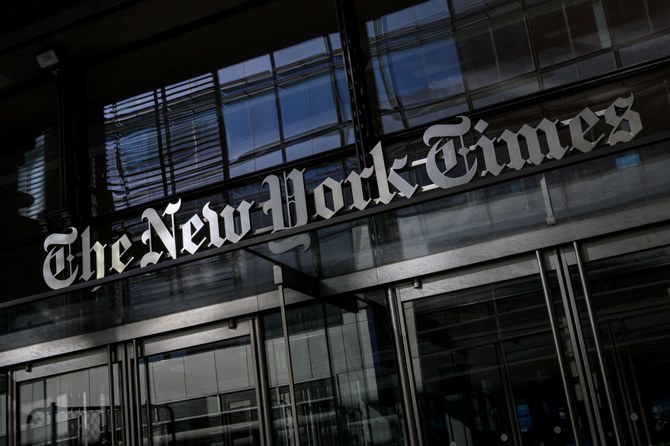LONDON: The New York Times is facing scrutiny over claims that its reporters “manipulated” family members linked to the victims of the Oct. 7 Hamas-led attack on Israel.
In an investigative report, “How Hamas Weaponized Sexual Violence on Oct. 7,” published on Dec. 28 last year, the newspaper alleged that Palestinian militants engaged in a pattern of gender-based violence against Israeli women during the surprise Al-Aqsa Flood operation.
But the family at the center of the report has since challenged claims made by the newspaper.
The authors, including Pulitzer Prize-winning journalist Jeffrey Gettleman, and Anat Schwartz and Adam Sella, said that the report was compiled from more than 150 interviews with purported victims or their families.
But a significant portion of the investigation focused on the Abdush family, working-class Mizrahi Jews whose daughter, Gal, and son-in-law, Nagi, were killed during the Hamas-led attack.
In relation to Gal’s death, the newspaper used footage recorded on Oct. 8 by Eden Wessely, an Israeli woman accused of disseminating misinformation about the conflict.
The clip, labeled by the Times as “The Woman in the Black Dress,” shows Gal’s corpse in a dress that had been lifted upward.
In the report, the Times said that the Abdush family had seen the footage and “feared that she (Gal) might have been raped,” with the newspaper claiming that the footage served as evidence of the “violence committed against women that day.”
Following Wessely’s release of the clip, the footage was also used as part of Israeli presentations to foreign countries and media organizations demonstrating the extent of the violence on Oct. 7.
The New York Times also examined timestamps of phone messages sent by Gal and Nagi before their deaths in an attempt to reconstruct the chaotic events of that morning.
In the report, the newspaper claimed that Nagi had sent his final message at 7:44 a.m., requesting that his children be looked after.
But according to Mondoweiss, the Times neglected to report on an earlier message sent by Nagi at 7 a.m. that confirmed Gal’s death.
The news website claimed that The New York Times had “manipulated a working-class Mizrahi family in the service of Israeli hasbara in order to score a journalistic achievement.”
In an interview with Gal’s parents on the Israeli Ynet news site, shortly after the Times report was published, the Abdush family contradicted the newspaper’s reporting.
Gal’s parents said that there was a lack of evidence regarding the alleged rape and accused the Times reporters of misleading them during interviews.
Etti Brakha, Gal’s mother, told Ynet: “We didn’t know about the rape at all. We only knew after a New York Times journalist contacted us. They said they matched evidence and concluded that she had been sexually assaulted.”
Gal’s sisters also vehemently deny the rape allegations.
Tali Barakha, one of Gal’s siblings, said on Instagram: “No one can know what Gal went through there! Also, what Nagi went through, but I can’t cooperate with those who say many things that are not true.
“I plead with you to stop spreading lies. There is a family and children behind them — no one can know if there was rape or if she was burned while alive.”
Nissim Abdush, Nagi’s brother-in-law, said in a Jan. 1 interview with Israel’s Channel 13 station that he did not believe Gal was raped, further challenging the Times’ narrative.
He argued that the timings of the different calls made by his brother did not align with the facts presented in the Times’ report.
On Oct. 7, Nissim continued to communicate with Nagi until the latter’s death, and his brother-in-law made no mention of sexual assault, he told Channel 13, accusing the US newspaper of having “invented” the story.
Other relatives of Gal and Nagi have also said that the “Woman in the Black Dress” video fails to support the newspaper’s claims.
Hamas, which led the Oct. 7 attack, has consistently rejected Israeli claims that its fighters engaged in rape and sexual assault.
The militant group said in a statement: “We reject the Israeli lies about raping, which aim to distort the resistance and tarnish our humane and moral treatment of captives.”




























